Butterhouse Tunnel
Butterhouse Tunnel
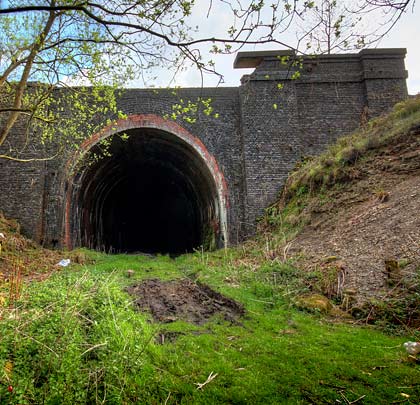
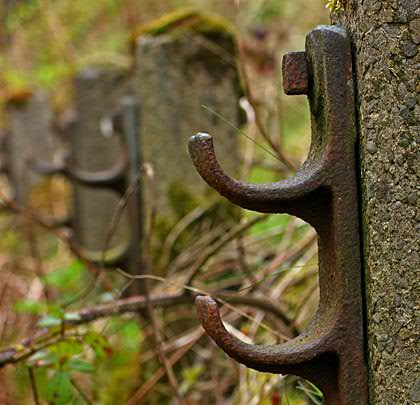
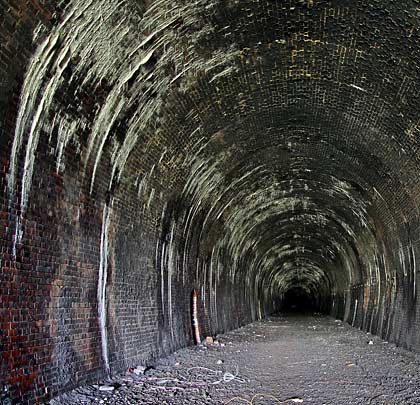
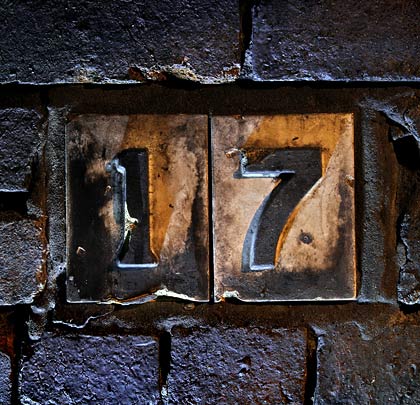
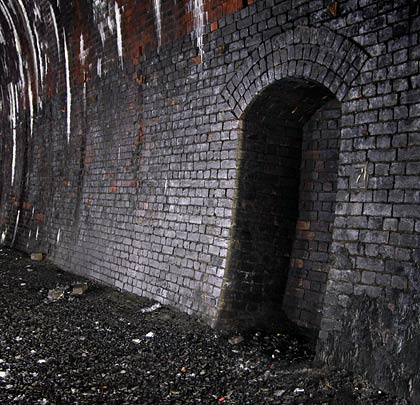
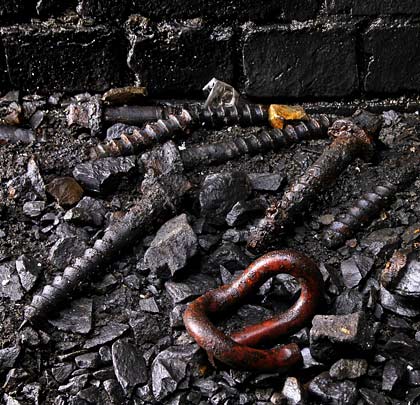
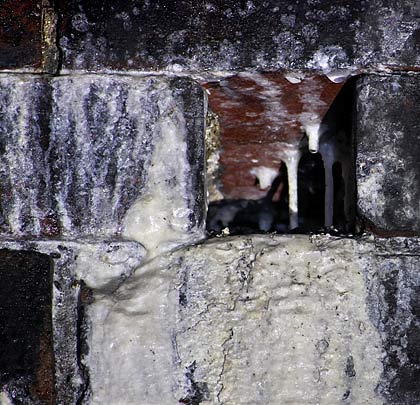
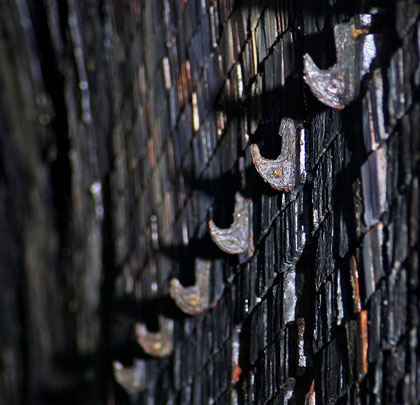
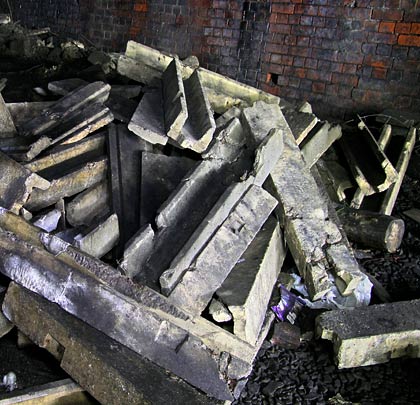
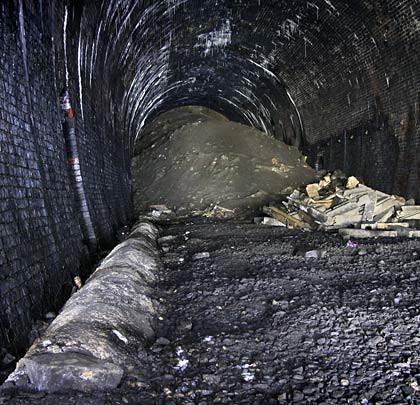
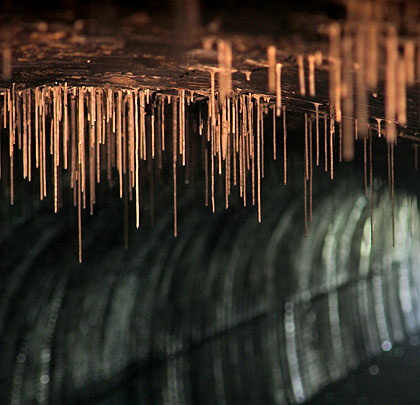
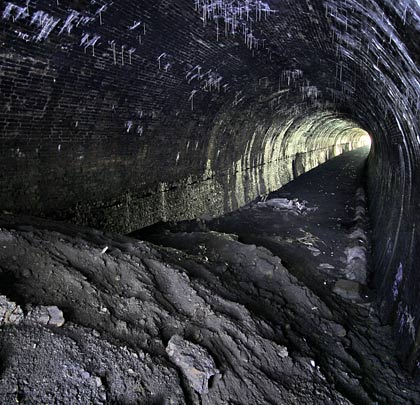












Butterhouse Tunnel was the first structure encountered by westbound traffic on the Micklehurst loop – a two-track ‘relief’ railway running along the east side of the Tame Valley, effectively four-tracking the main trans-Pennine route via Diggle. Opened in 1885, it was mostly used for freight. Laying additional tracks on the original alignment was impractical due to the valley’s steep sides and a lack of space.
The tunnel’s western approach cutting has been buried since the route’s closure in 1966 but the scruffy-looking eastern portal remains. A fleeting glimpse of it can be caught from passing trains. Most of the copings have succumbed to time and vandalism.
Constructed in engineering brick, the main lining is seven courses thick at the crown. Towards the eastern end, 3-6 rings of red brick have been inserted as a secondary lining, presumably for strengthening purposes.
329 yards in length, the tunnel incorporates a gentle curve to the south towards its western end. It boasts a patchwork of red and engineering brick, with refuges provided for platelayers and ceramic tablets in the north sidewall to benefit the local ganger’s note-taking. A high-level row of cable hangers is also apparent, together with hundreds of short stalactites.
A previous draft Route Utilisation Strategy for Yorkshire & Humber had put forward the reopening of the Micklehurst loop as one possible solution to the capacity constraints across the Pennines. But this idea was not incorporated into the Northern Hub scheme. As a result, the tunnel is unlikely to ever find function again.







